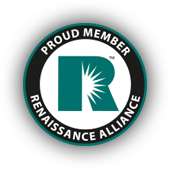Florida Non-Profit Organization Insurance
8:30am - 5:00pm Mon-Fri
Will Reply in 15min*
Top Recommended Business Insurance Policies

Index
Contact Us
Phone
Location
6900 Tavistock Lakes Blvd, Suite 400, Orlando FL 32827
Non-profit organizations play a crucial role in serving the community and addressing various social issues. In the state of Florida, these organizations are subject to specific insurance requirements to ensure the protection of their mission, assets, and people. Understanding these insurance requirements is essential for non-profits to operate confidently and responsibly. This article aims to provide a comprehensive overview of the insurance requirements for non-profit organizations in Florida.
Defining Non-Profit Organizations in Florida
Before delving into the insurance requirements, it's crucial to understand what constitutes a non-profit organization in the state of Florida. Non-profit organizations, also known as 501(c)(3) organizations, are entities established for charitable, educational, scientific, religious, or literary purposes. These organizations seek to benefit the public rather than generating profits for individuals or shareholders.
Non-profit organizations play a vital role in the community, addressing various social issues and providing essential services to those in need. They rely on donations, grants, and fundraising efforts to sustain their operations and fulfill their missions. These organizations often collaborate with government agencies, businesses, and volunteers to maximize their impact and reach.
Legal Structure of Non-Profits
Non-profit organizations in Florida can take various legal structures, including charitable trusts, corporations, and unincorporated associations. Each structure has its own benefits and requirements, so it's essential to consult with legal professionals to determine the most suitable structure for your organization.
Charitable trusts are a common legal structure for non-profit organizations, providing a way to manage and distribute assets for charitable purposes. Corporations, on the other hand, offer limited liability protection to the organization's directors and officers. Unincorporated associations are less formal and provide flexibility but may have fewer legal protections.
Choosing the right legal structure is crucial for non-profit organizations as it affects their governance, tax-exempt status, liability, and ability to raise funds. It is advisable to seek legal counsel to ensure compliance with state and federal laws and to protect the organization's interests.
Types of Non-Profit Organizations
The non-profit sector in Florida encompasses a wide range of organizations, each with its unique mission and focus. Educational institutions, such as schools, colleges, and universities, play a vital role in shaping the future by providing quality education to students of all ages.
Healthcare providers, including hospitals, clinics, and medical research organizations, aim to improve the well-being of individuals and communities. These organizations work tirelessly to provide medical services, conduct research, and promote public health initiatives.
Environmental advocacy groups play a crucial role in protecting and preserving Florida's natural resources. They work towards raising awareness about environmental issues, advocating for policy changes, and implementing sustainable practices to ensure a greener future.
Social services organizations focus on addressing social challenges and improving the lives of vulnerable populations. They provide support and resources to individuals and families facing poverty, homelessness, domestic violence, and other societal issues.
Cultural institutions, such as museums, art galleries, and performing arts organizations, contribute to the enrichment of society by preserving and promoting art, history, and cultural heritage. These organizations offer educational programs, exhibitions, and performances that inspire and engage the community.
Each type of non-profit organization has its own set of activities, risks, and insurance requirements. Educational institutions may require coverage for student accidents, while healthcare providers need malpractice insurance. Environmental advocacy groups may need liability coverage for events and campaigns, and social services organizations may require insurance for their facilities and volunteers.
Understanding the specific insurance needs of your non-profit organization is crucial to ensure adequate protection and risk management. Consulting with insurance professionals who specialize in non-profit organizations can help you navigate the complexities of insurance coverage and find the right policies for your organization's unique needs.
Overview of Insurance Requirements for Non-Profits
Insurance plays a vital role in protecting non-profit organizations from various risks and liabilities. It provides financial coverage in case of accidents, property damage, lawsuits, and other unforeseen events. While it's not mandatory for non-profits to carry insurance in Florida, having appropriate coverage is highly recommended to safeguard their operations and assets.
Non-profit organizations face unique challenges and risks that require careful consideration when it comes to insurance. Understanding the importance of insurance and the various types available is crucial for non-profits to ensure their long-term success and sustainability.
Importance of Insurance for Non-Profits
Insurance offers non-profit organizations protection against potential risks that could jeopardize their mission and financial stability. Accidents, injuries, property damage, and lawsuits can result in significant financial burdens that may hinder the organization's ability to fulfill its purpose. Insurance coverage provides peace of mind and mitigates the impact of such events.
Moreover, insurance not only protects the organization but also its employees, volunteers, and stakeholders. It instills confidence in donors and supporters, assuring them that their contributions are being used responsibly and that the organization has taken steps to manage potential risks.
Common Types of Insurance for Non-Profits
Non-profit organizations should consider several types of insurance to adequately protect their operations:
- General Liability Insurance: This insurance covers bodily injury, property damage, and personal injury claims arising from the organization's activities. It protects against accidents and lawsuits filed by third parties.
- Property Insurance: Property insurance covers damage or loss of buildings, equipment, furniture, and other tangible assets owned or leased by the non-profit organization. This includes protection against fire, theft, vandalism, and natural disasters.
- Directors and Officers Insurance (D&O): D&O insurance protects the board members and officers of non-profit organizations from legal actions relating to their decisions or management practices. It provides coverage for defense costs and settlements in case of allegations of mismanagement, financial impropriety, or breach of fiduciary duty.
- Professional Liability Insurance: Also known as Errors and Omissions (E&O) insurance, professional liability coverage protects non-profit organizations against claims of negligence or inadequate performance in providing professional services. This is particularly important for non-profits that offer counseling, legal advice, healthcare services, or other specialized services.
- Workers' Compensation Insurance: If the non-profit organization has employees, workers' compensation insurance provides coverage for medical costs and lost wages in case of work-related injuries or illnesses. It ensures that employees are protected and their needs are met in the event of an unfortunate incident.
It is important for non-profit organizations to carefully assess their specific needs and consult with insurance professionals to determine the most appropriate coverage options. Each non-profit's insurance requirements may vary depending on their activities, size, and the nature of their operations.
By investing in comprehensive insurance coverage, non-profit organizations can focus on their mission and make a positive impact on their communities, knowing that they are protected from potential risks and liabilities.
Specific Insurance Requirements for Florida Non-Profits
When it comes to insurance coverage for non-profit organizations in Florida, there are no specific mandates set by the state. However, it is important for non-profits to be aware of the regulations and laws in place to ensure they have adequate protection.
Florida has various state regulations and laws that govern the operations of non-profit organizations. These regulations encompass a range of requirements, including registration, reporting, and adherence to specific fundraising and financial management practices. By complying with these regulations, non-profits not only ensure their legal standing but also maintain their credibility within the community.
While the state does not impose specific insurance requirements, non-profit organizations operating in different sectors may face unique risks that necessitate specific coverage. For instance, healthcare providers within the non-profit sector may need to obtain malpractice insurance to protect against potential claims. On the other hand, environmental advocacy groups may require additional coverage to address pollution-related risks that they may encounter in their work.
It is crucial for non-profit organizations to conduct a thorough assessment of their specific risks and consult with insurance professionals who specialize in serving the non-profit sector. These professionals can provide valuable guidance on the types of insurance coverage that are most relevant and necessary for their particular sector.
Furthermore, non-profits should also consider other types of insurance coverage that may be beneficial to their organization. This could include general liability insurance, which provides protection against claims of bodily injury or property damage, or directors and officers (D&O) insurance, which safeguards board members and officers from personal liability in relation to their duties.
By taking the time to carefully evaluate their risks and consult with insurance experts, non-profit organizations in Florida can ensure they have the appropriate coverage to protect their assets, employees, and volunteers. While insurance may not be mandated by the state, it is an essential component of a comprehensive risk management strategy for non-profits.
Applying for insurance can sometimes be a complex and time-consuming process. However, with proper understanding and preparation, non-profit organizations can navigate this process efficiently.
Insurance is a crucial aspect of risk management for non-profit organizations. It provides financial protection against unforeseen events and liabilities that could potentially cripple an organization's operations. Whether it's protecting against property damage, liability claims, or employee injuries, having the right insurance coverage is essential for the long-term sustainability of non-profit organizations.
Steps to Apply for Non-Profit Insurance
When applying for insurance, non-profit organizations should follow these key steps:
- Evaluate the organization's risks and insurance needs.
Every non-profit organization is unique, and so are their risks. Before diving into the insurance application process, it's important to conduct a thorough assessment of the organization's risks. This includes identifying potential hazards, such as property damage, theft, or professional liability. By understanding the risks, non-profits can determine the type and amount of insurance coverage they need. - Collect and organize relevant documentation, including financial records, asset inventories, and legal documents.
Insurance applications require a significant amount of documentation to support the organization's claims and provide a comprehensive picture of its operations. Non-profits should gather financial records, including income statements and balance sheets, to demonstrate their financial stability. Additionally, asset inventories and legal documents, such as contracts and leases, may be required to assess the organization's liabilities accurately. - Research and obtain quotes from multiple insurance providers to compare coverage options and costs.
It's always a good idea to shop around and obtain quotes from multiple insurance providers. This allows non-profit organizations to compare coverage options, costs, and policy terms. By doing so, they can make an informed decision and choose an insurance provider that offers the best value for their specific needs. - Review the terms and conditions of the insurance policies, ensuring they align with the organization's needs and risk tolerance.
Insurance policies can be complex documents, filled with legal jargon and technical terms. Non-profit organizations should carefully review the terms and conditions of the policies they are considering. It's important to ensure that the coverage aligns with the organization's needs and risk tolerance. Paying attention to details such as coverage limits, deductibles, and exclusions can help avoid any surprises in the event of a claim. - Submit the completed application along with the required documentation to the chosen insurance provider.
Once the non-profit organization has selected an insurance provider and completed the application, it's time to submit the paperwork. It's crucial to double-check that all required documentation is included to avoid any delays in the application process. Missing or incomplete information may result in a longer wait time or even a denial of coverage. - Stay in contact with the insurance provider to address any questions or additional requirements.
Throughout the application process, it's important to maintain open lines of communication with the insurance provider. They may have additional questions or require further documentation to complete the underwriting process. Being responsive and proactive in addressing any inquiries can help expedite the application and ensure a smooth transition to coverage.
Understanding Insurance Premiums and Coverage
When considering insurance policies, non-profit organizations should carefully review the premiums, deductibles, coverage limits, and exclusions. It's essential to strike a balance between the organization's risk exposure and available budget. Working with an experienced insurance broker can help non-profits understand the nuances of different policies and identify the most suitable options.
Insurance premiums are the regular payments made by non-profit organizations to maintain coverage. These premiums are determined by various factors, including the organization's size, industry, claims history, and the coverage limits chosen. Non-profits should carefully consider their budgetary constraints and the potential financial impact of insurance premiums when selecting a policy.
Deductibles are the amount that non-profit organizations must pay out of pocket before the insurance coverage kicks in. Higher deductibles typically result in lower premiums but may require the organization to bear a larger financial burden in the event of a claim. Non-profits should assess their risk tolerance and financial capabilities when deciding on an appropriate deductible amount.
Coverage limits define the maximum amount an insurance policy will pay out for a covered loss. Non-profit organizations should evaluate their potential liabilities and assets to determine the appropriate coverage limits. It's important to strike a balance between adequate coverage and affordability.
Exclusions are specific situations or events that are not covered by an insurance policy. Non-profit organizations should carefully review the exclusions to understand what risks they may still be exposed to. In some cases, additional coverage or endorsements may be necessary to fill any gaps in protection.
By thoroughly understanding insurance premiums, deductibles, coverage limits, and exclusions, non-profit organizations can make informed decisions when selecting insurance policies. This knowledge empowers them to protect their operations, assets, and stakeholders effectively.
Risk Management for Non-Profit Organizations
In addition to insurance coverage, non-profit organizations should actively engage in risk management to identify potential risks, prevent incidents, and minimize the impact of unfortunate events.
Identifying Potential Risks
Non-profit organizations should conduct a thorough assessment of their activities, facilities, and operations to identify potential risks. This includes assessing risks related to premises, events, volunteers, employees, cyber threats, and other vulnerabilities specific to their sector.
Implementing Risk Management Strategies
Once potential risks are identified, non-profits should develop and implement risk management strategies to mitigate those risks. This may involve creating safety protocols, establishing clear policies and procedures, conducting regular staff training, and implementing robust cybersecurity measures.
By actively managing risks and having appropriate insurance coverage, non-profit organizations in Florida can confidently fulfill their missions while safeguarding their assets, volunteers, and employees. Understanding the insurance requirements specific to their sector and complying with relevant regulations are essential steps towards ensuring long-term sustainability and success.








